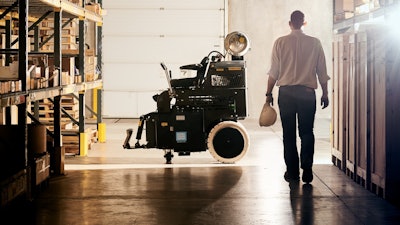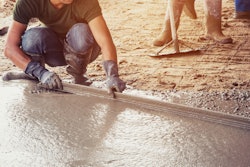
The construction industry plays an important role in the U.S. economy, with the industry contributing over 4 percent of the annual gross domestic income (GDP) and employing 5 percent of the population. With this large GDP percentage and over 16.25 million people working in this industry across the country, maintaining a competitive edge against other countries, like Germany, means businesses need to continue to produce high quality results.
Many contractors think that there is a one size fits all solution to floor preparation, but this isn’t the case. Each floor is laid down in a different way, using different materials to best suit the application. To create an even surface, contractors must properly clean and level the floor by removing any existing flooring and adhesive before adding the new flooring. Due to this variability, contractors need tailored surface preparation solutions to ensure they get the highest quality result in the most efficient way.
Challenges With Preparation
When speaking to contractors, we often find that many are still using traditional processes to remove flooring, such as a jackhammer. Preparing floors using this equipment can be time-consuming and operators can easily damage the floor and final look of the new flooring if equipment is not operated correctly. The safety of the operator is also at risk because of the strain of using heavy machinery on the body and the safety risks of being in close proximity to the drill bit.
Floor scraping machinery removes these issues by making the process faster with more specialised tools and safer because the operator is riding the machine or behind it, far away from the tooling. Contractors can choose scrapers based on the job size, power requirements and existing floor type. Contractors can also look at equipment features, such as hydraulic steering that makes it easy to maneuver in tight spaces found in many residential sites and consistent torque that ensures higher removal rates and greater productivity.
In the U.S., customers commonly use ride-on scrapers, as they often work on larger scale applications compared to European counterparts. Ride-on scrapers help operators maximize their productivity because the machine provides better removal rates compared to a walk-behind or manual process. Ride-on scrapers also cause less strain on the operators, especially if they need to remove large amounts of flooring, allowing them to remain efficient for longer periods of time. Ride-on scrapers can also be easily transported around site, allowing them to be easily sent throughout the site at any point.
Going the Extra Step
The customer journey shouldn’t stop with the purchase of a machine. Training and consultation are important to maintain a long-standing relationship between customers and manufacturers. Effective in-person or online training ensures operators have the knowledge on safely and effectively operating and maintaining machinery. The more operators know about their equipment, the easier it is to complete effective surface preparation, reduce costs for the business and ultimately reduce time on site.
Training also allows operators to understand the health impacts using the machinery and removing certain flooring can have on them. Consider this example, an operator is regularly cutting concrete, which releases silica dust into the air. Overtime the operator to develop bronchitis, which has a serious impact on their health and future career. If the operator had had sufficient training, they would have known how to reduce dust exposure by connecting machines to dust collectors and that they needed to wear specific personal protective equipment (PPE) to protect themselves further.
According to Australian Bureau of Statistics, in America, small construction firms account for 65 percent of employment, but only 55 percent of productivity. Over half of the industry needs affordable machinery rental solutions to ensure that they can provide high quality and efficient results when they need it and compete against the larger businesses that can buy the technology outright. Ensuring smaller firms are as efficient as possible helps maintain a diverse range of choice for construction customers across America. Rental options are available from family-owned and American-manufactured business, like National Flooring Equipment, who pride themselves on providing high quality American rental products to the market.
The U.S. construction market is predicted to have a compound annual growth rate of five percent by 2026, so maintain high quality machinery in the industry is key to maintaining a competitive edge. Taking the time to consult a floor preparation expert, like National Flooring Equipment, will allow businesses to find the most efficient solution for their applications and learn how to use it in the more effective way.




















